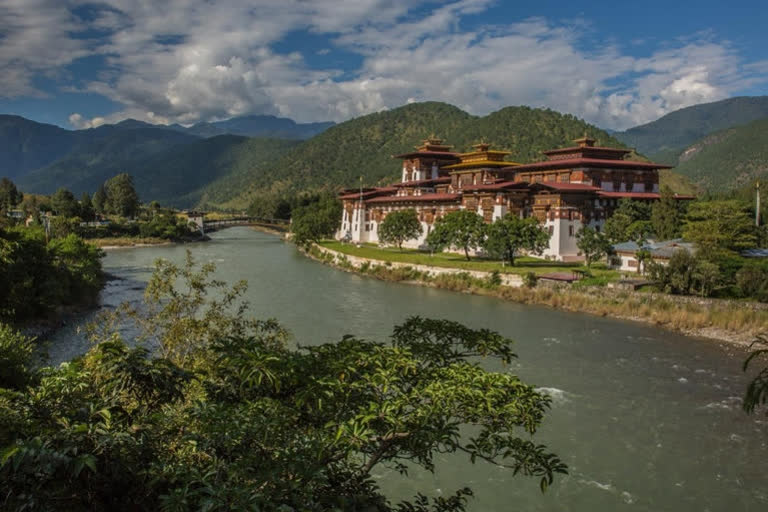New Delhi: China’s new expansionist design of laying claim to the Sakteng Wildlife Sanctuary in eastern Bhutan bordering the northeast Indian state of Arunachal Pradesh is Beijing’s attempt to establish diplomatic ties with Thimphu and test ties between India and the Himalayan kingdom, experts believe.
At a media briefing Tuesday, Chinese Foreign Ministry spokesperson Wang Wenbin said that China has offered a package deal to solve what it calls its border disputes with the small South Asian nation.
“China’s position has been consistent and clear. The boundary between China and Bhutan is yet to be demarcated, and the middle, eastern and western sections of the border are disputed,” Wang was quoted as saying.
“China has proposed a package solution to these disputes. China is opposed to making an issue of such disputes at multilateral forums and China remains in communication with the relevant parties regarding this issue,” he stated.
Wang’s response came following questions on China’s objections to develop the Sakteng Wildlife Sanctuary by the Global Environment Facility (GEF), a fund that unites 183 countries in partnership with international institutions, civil society organizations, and the private sector to address global environmental issues while supporting national sustainable development initiatives.
What has left observers stunned is that China is laying claim to an area that is not even contiguous to its international border and is on the India-Bhutan border.
Read: Amid coronavirus pandemic, China pursues hegemonistic policy in South China Sea
This comes even as India and China are discussing de-escalation of tensions following a bloody border conflict in the Ladakh region last month that resulted in fatalities on both sides, the first such between the two Asian giants in 45 years along the 3,488-km long Line of Actual Control (LAC).
The Sakteng Wildlife sanctuary in eastern Bhutan borders the Indian state of Arunachal Pradesh which China claims to be a part of what it calls “south Tibet”.
Bhutan and China do not have any official diplomatic ties. After China and Bhutan became neighbours following Beijing’s annexation of Tibet in 1951, the two countries have engaged in 24 rounds of talks since 1984 to solve border disputes.
However, India and Bhutan share solid diplomatic ties with New Delhi being Thimphu’s key development aid partner. India is also Bhutan’s largest trading partner.
The latest claim by Beijing in Bhutan comes after Indiana and Chinese troops were engaged in a tense 73-day standoff in the Doklam region on the India-Bhutan-China international trijunction in 2017. This came after China’s People’s Liberation Army (PLA) tried to construct a road there. Following the Doklam incident, Bhutan has not engaged in any talks on border issues with China and stood in support of India.
According to experts, the package deal that China is now offering to Bhutan is Beijing’s bid to coerce Thimphu into establishing diplomatic relations and then claim the Doklam region.
Speaking to ETV Bharat, Dr S.D. Muni, professor emeritus at the School of International Studies, Jawaharlal Nehru University, said that under the deal, China is likely to waive off what it calls its claims in central and eastern Bhutan and then establish its right over Doklam.
“China wants to claim Doklam in Bhutan’s west as it is adjacent to the strategic Chumbi Valley,” Muni said.
Why this is a cause of worry for New Delhi is because the Chumbi Valley intervenes between the Indian state of Sikkim and Bhutan south of the high Himalayas in China, pointing towards India's Siliguri Corridor – called the “chicken’s neck” connecting northeast India with the rest of the country – just five km away like a dagger.
“Their (China’s) idea is to put pressure on Bhutan to establish diplomatic ties with them and test New Delhi’s ties with Thimphu,” Muni said. “Bhutan is the only South Asian country that does not have diplomatic ties with China.”
Read: India-EU free trade agreement unlikely in near future: Experts
At the same time, Muni said that the Bhutanese would tend to solve its border disputes with China but wouldn’t like to come in between the India-China conflict.
Reflecting Muni’s view, Ankit Panda, director of research at the Diplomat Risk Intelligence, states that China’s purpose of opening this claim to more than 10 per cent of sovereign Bhutanese territory may be primarily intended to coerce Thimphu into making concessions in other areas, such as Doklam, on terms favourable to Beijing.
China’s claim on Bhutan territory is the latest in its expansionist policies in the region, including the border with India, the South China Sea and the Senkaku Islands in the East China Sea bordering Japan.
Though world powers, particularly the US, have been strongly critical of Beijing’s plans, according to Muni, India would rather like to see Bhutan resolve its latest issue with China without intervention from others.
(Article by Aroonim Bhuyan)



